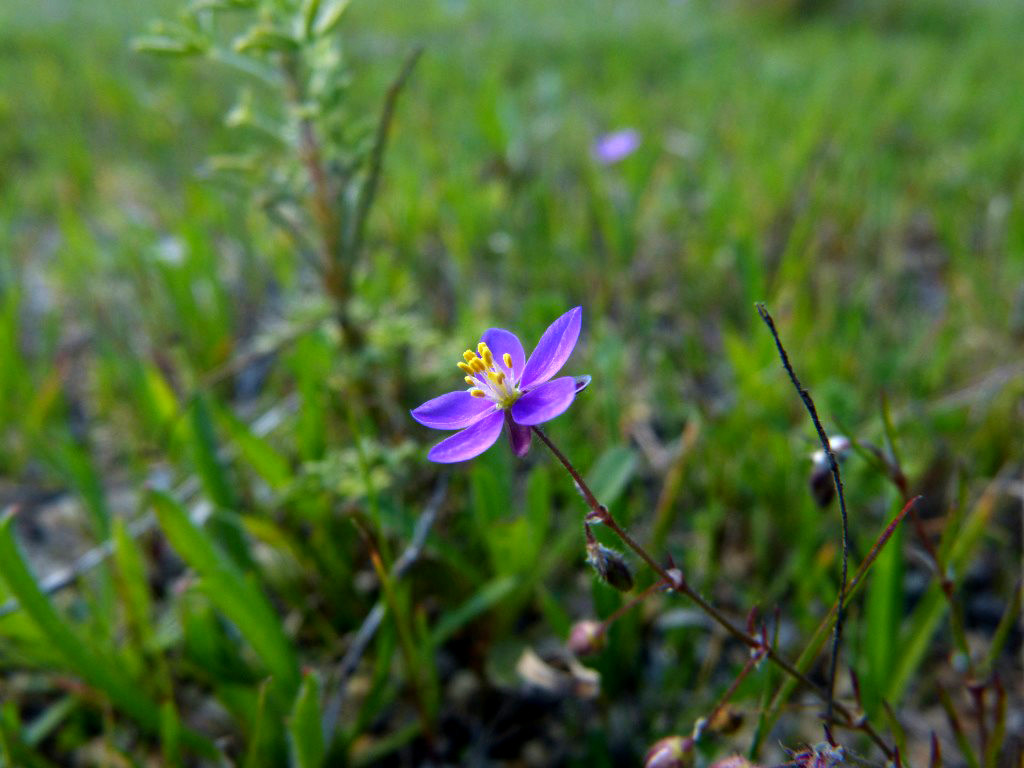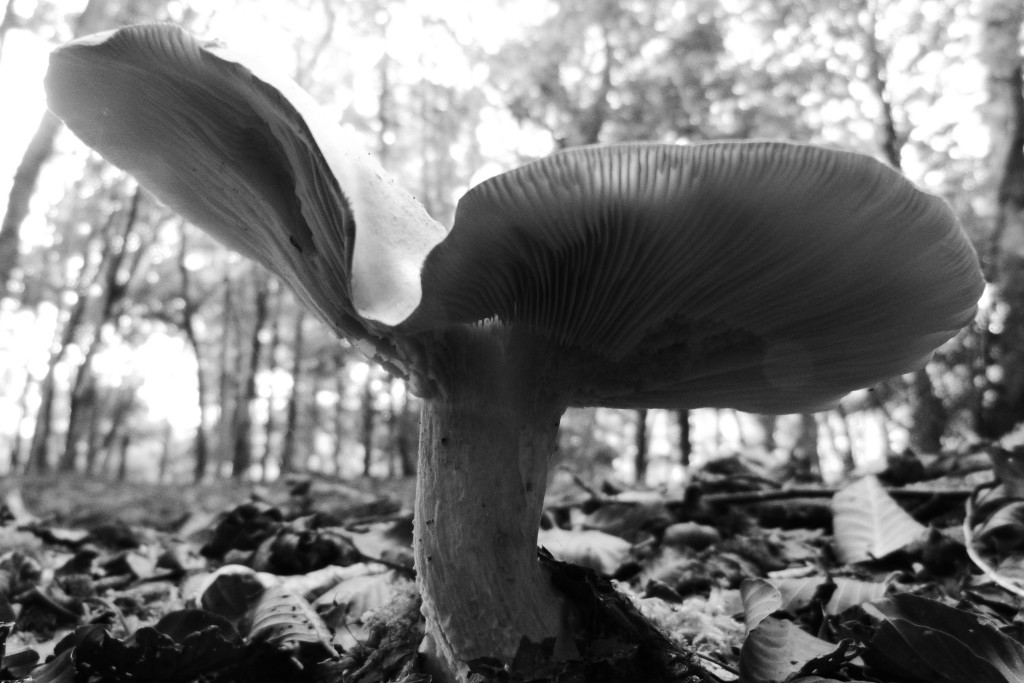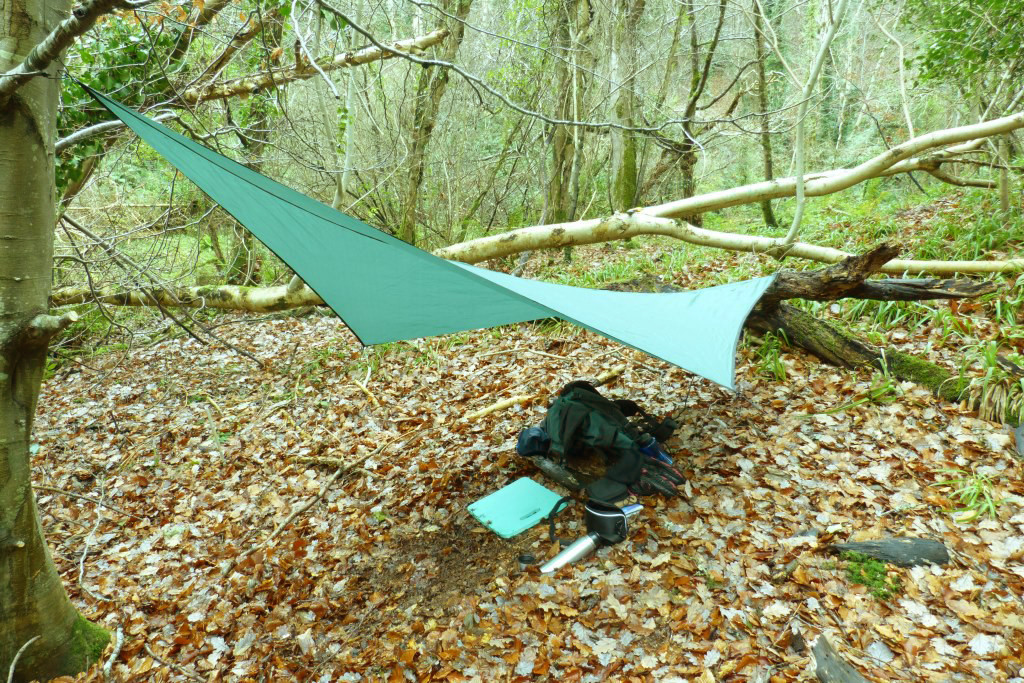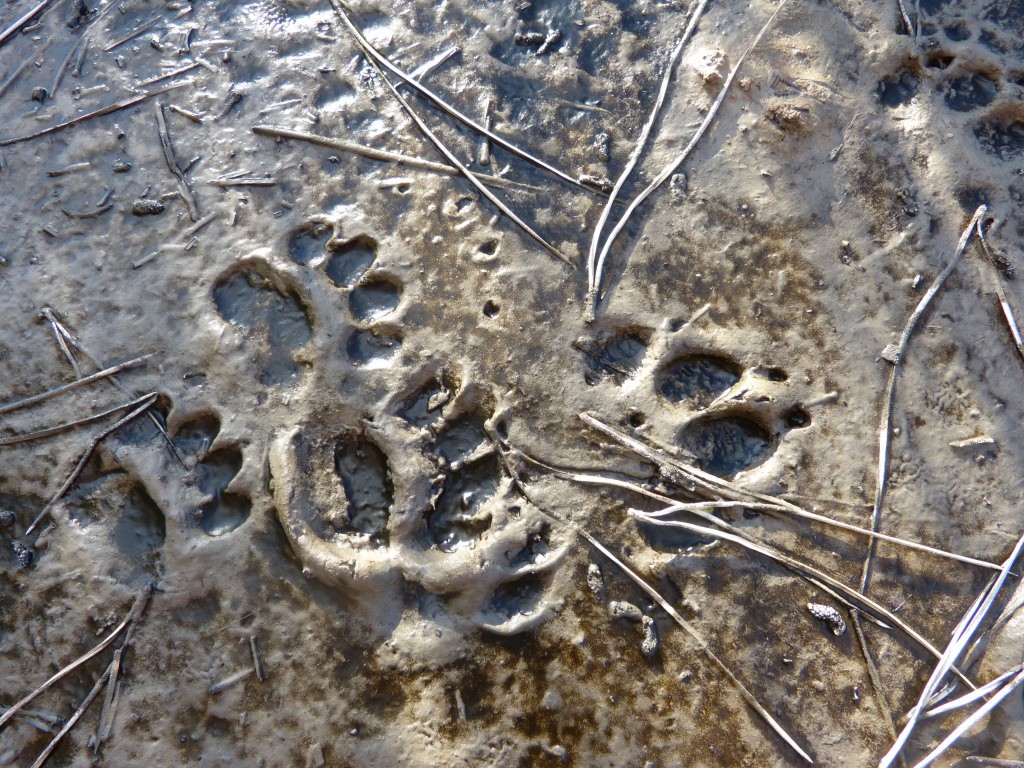By Sean Fagan

A kneeling position is often required for close-up photos of wild flowers (Photo: Sean Fagan).
.
Kneeling Pads
&
Mushrooms, Wild Flowers & Tracks
.
Building up a good photographic record of mushrooms, wild flowers and tracks can be important for those who want to tackle the oft thorny issue of competent mushroom, wild flower and track identification.
One simple, versatile piece of kit I've found very useful for acquiring good, close-up photos is a garden kneeling pad.
A kneeling pad is great for a more leisurely examination of the many key details - but without the distracting discomfort of kneeling on cold, hard or damp terrain.
In this post I've deliberately emphasised small, ground surface features such as mushrooms, wild flowers and tracks, as these are three important areas of bushcraft which greatly benefit from close-up photography.
Building up a good photographic record of these subjects, over time, will greatly improve identification skills in all three of these areas.
.
Photographs can also be leisurely examined at home, where it's possible to tease out and examine key details and patterns of similarity between, for example, different plant families of wildflowers.
Also, when examining photos at home it's possible to avail of reference material, which is not always possible or practical when outdoors.
So, in terms of improving identification skills - taking the extra time to obtain good photos of tracks, wild flowers and mushrooms is well worth the time - and a kneeling pad can be a great aide for this purpose.
.

A kneeling pad was required to comfortably take this mushroom photo on a damp woodland floor (Photo: Sean Fagan).
.
In addition - comfortable, close-up photography can greatly enhance a person's enjoyment of mushrooms, wild flowers and tracks.
Close-up photography requires the photographer to slow down and pause - and it's in these slow, still, often poignant moments that nature often reveals its inherent beauty and intricacy more fully.
In effect, a kneeling pad allows a person's eye to comfortably revel in the small and beautiful intricacies of nature.
For myself, I very rarely venture into wild places without a kneeling pad when I bring my camera.
.
The Versatile Kneeling Pad
.
In keeping with the spirit of using bushcraft gear with multiple uses - the kneeling pad is surprisingly versatile.
The following is a list of kneeling pad uses I've personally availed of (for years):
Sitting Pad:
Whether hiking mountains during winter or camping out in cold, challenging conditions, having a well insulated seating pad can be important for negating the chilling effects of sitting on a cold surface.
You can have the best of cold weather clothing and footwear and still get chilled if sitting on a cold surface.
Fire-Fan:
Brisk fanning of an ailing fire can quickly revive a campfire back to its former, toasty glory.
I use my pad most often in two scenarios:
1.) While igniting a campfire that is struggling (esp. on a damp day) and needs more air to become established.
2.) When an established campfire has died down and I've added more kindling/fuel.
Igniting a Camp Fire:
Igniting a campfire requires kneeling down.
For comfort, I place my pad under my knees when igniting a campfire during damp, cold or hard ground surface conditions.
Bow Drill:
Another fire task that requires kneeling is bow-drilling.
Bow-drilling can be made all the more comfortable when the knee on the ground is well cushioned.
Campfire Protector:
A pad can even be used as an effective, temporary roof to protect a campfire from heavy rain, especially during the vulnerable, fire-starting phase.
Rucksack Partition:
For separating and organising kit in the main rucksack compartment (I often use my pad to separate my cutting tools from more delicate kit, e.g. sleeping bag).
.
Durable, non-absorbent, light and relatively compact - I consider a good, foam kneeling pad important kit for the outdoors, as attested to the years of regular use I've put my kneeling pad through.
When choosing a foam pad, I like pads that are at least 1 inch thick and have a hand-grip hole at one end - which makes for a very convenient means of hanging the pad when not in use and for drying it when it's damp.
.

Hike break during a showery day. Note kneeling pad under tarp - providing a dry, insulated seat on the damp woodland floor (Photo: Sean Fagan).
.
Buying & Making Kneeling Pads
.
Kneeling pads are widely available in garden supply stores, hardware stores and budget stores (such as Eurosaver and Poundstretcher, in Ireland and Britain respectively).
My own kneeling pad, in above photo, cost only 2 euros and I've used it for years (it has a few campfire burn holes, but it's almost as good as the day I bought it).
If you find it hard to source a kneeling pad, you might consider making your own - out of a sleeping or yoga foam mat for example.
I've even made one from a cheap, heat-reflective mat, which are used as covers on the inner surface of vehicle windscreens.
With a little ingenuity, there are many lightweight, compact and durable budget and recycling options available.
.

A kneeling pad can greatly enhance the enjoyment of close-up photography of small, ground details such as these badger and domestic dog tracks (Photo: Sean Fagan).
.
.
Related articles on this website:.
*Check me out on Instagram, Twitter & Facebook for more outdoor-related topics.
Recent Comments